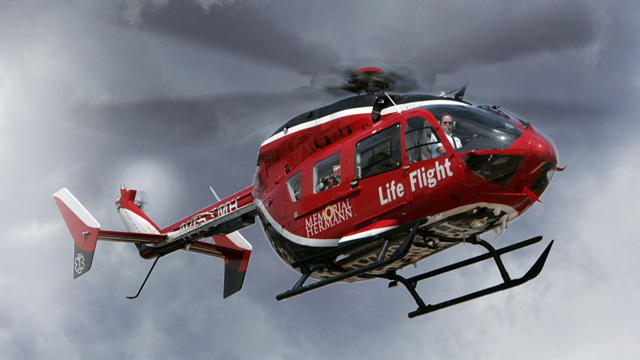
Myth #1
MYTH: Life Flight only transports trauma patients.
FACT: While Life Flight is known for its excellence in trauma care, Life Flight often deploys specialty flights carrying perfusionists equipped with intra-aortic balloon pumps, neonatal nurses and other specialty nurses. In addition, Life Flight can transport high-risk or active-labor OB patients and has access to leading maternal-fetal medicine and OB physicians. Every flight is staffed by highly skilled medical personnel with years of experience in emergency medicine and critical care.
Myth #2
MYTH: Rear stretcher loading of an aircraft is dangerous and can place patients in danger.
FACT: Rear stretcher loading onto an aircraft is safe and considered best practice in the industry. The main rotor blades of the aircraft are 12 feet from the ground, and the tail rotor is elevated. The crew is trained to place a crew member by the rear to ensure safety. The aircraft itself is extremely safe and it serves as the industry standard for multiple services.
Myth #3
MYTH: Blood products cannot be safely administered in the pre-hospital setting.
FACT: Life flight has proven that not only can blood products be safely administered to patients in-air, but that doing so improves clinical outcomes. Life Flight has developed procedures for proper storage and refrigeration of blood products in the aircraft and at satellite bases.
Myth #4
MYTH: Transport by ground is just as fast as transport by air.
FACT: This can be true depending on location, traffic patterns and the time of day. A majority of our flights, however, are outside Beltway 8, and the few minutes spent waiting on an aircraft can make a significant difference for a patient in need of surgery or blood products. Air transport isn’t always the best choice for the patient, and all options should be considered based on the patient’s condition and how quickly he or she can be transported to a hospital.
Myth #5
MYTH: Flying in a helicopter is dangerous and places patients at unnecessary risk.
FACT: Life Flight’s commitment to safety is paramount, and the organization’s safety record proves that. Life Flight meets – and in some cases, exceeds – all of the national safety standards set by the FAA and CAMTS. All of Life Flight’s aircraft are engineered with redundant systems, meaning they have two engines, two hydraulic systems, two electrical systems, two radios, two GPS systems, and more. If one system fails, another is in place, ensuring safety and reliability of all features.
Myth #6
MYTH: Life Flight only transports to Memorial Hermann-Texas Medical Center.
FACT: Life flight will transport to any appropriate facility. Trauma patients will be transported to a Level I trauma center, and the area’s only Level I trauma centers with helipads are Memorial Hermann-Texas Medical Center and UTMB Galveston. Trauma patients will be transported to either of these two facilities based on distance and EMS request. Medical patients will be transported to hospitals both within and outside the Memorial Hermann system. Factors considered when choosing the location of care include the patient’s condition and the care needed, e.g., cath labs for cardiac patients, Neuro ICU and surgery for CVA, etc. Our goal is always to improve patient outcomes, not patient numbers.
Myth #7
MYTH: Life Flight does not perform CPR in the back of the aircraft and will not transport a patient in cardiac arrest.
FACT: Life Flight does transport patients in cardiac arrest, and CPR can be performed quite effectively in the back of the aircraft. Life Flight’s policy is to never deny transport of patients in cardiac arrest, and all resuscitative measures will be performed in the air on any patient in cardiac arrest.
Myth #8
MYTH: Life Flight does not give patients pain medications.
FACT: Life Flight will give patients pain medication when appropriate. Pain control is often one of the most important things we can do for our patients as we transfer them to the hospital. There are times, however, when the administration of pain medications can be contraindicated and can potentially put patients at risk. Patient stability is always a factor when determining the need for pain medication. In many trauma situations, a patient’s adrenergic sympathetic response is the only thing keeping him or her alive. Pain medications can dull the physiologic “fight or flight” response, rendering a patient unstable. Whether by ground or air, a good assessment of a patient’s hemodynamic state is always essential.
